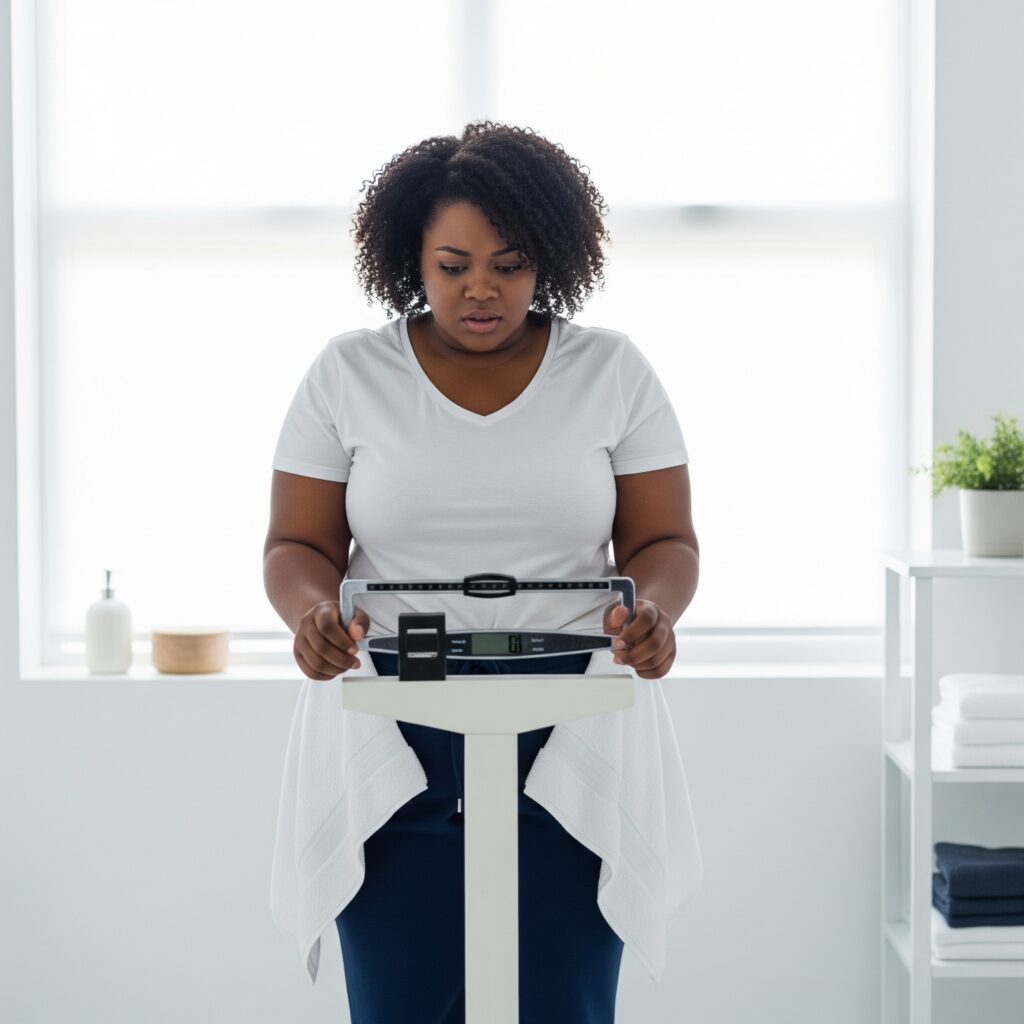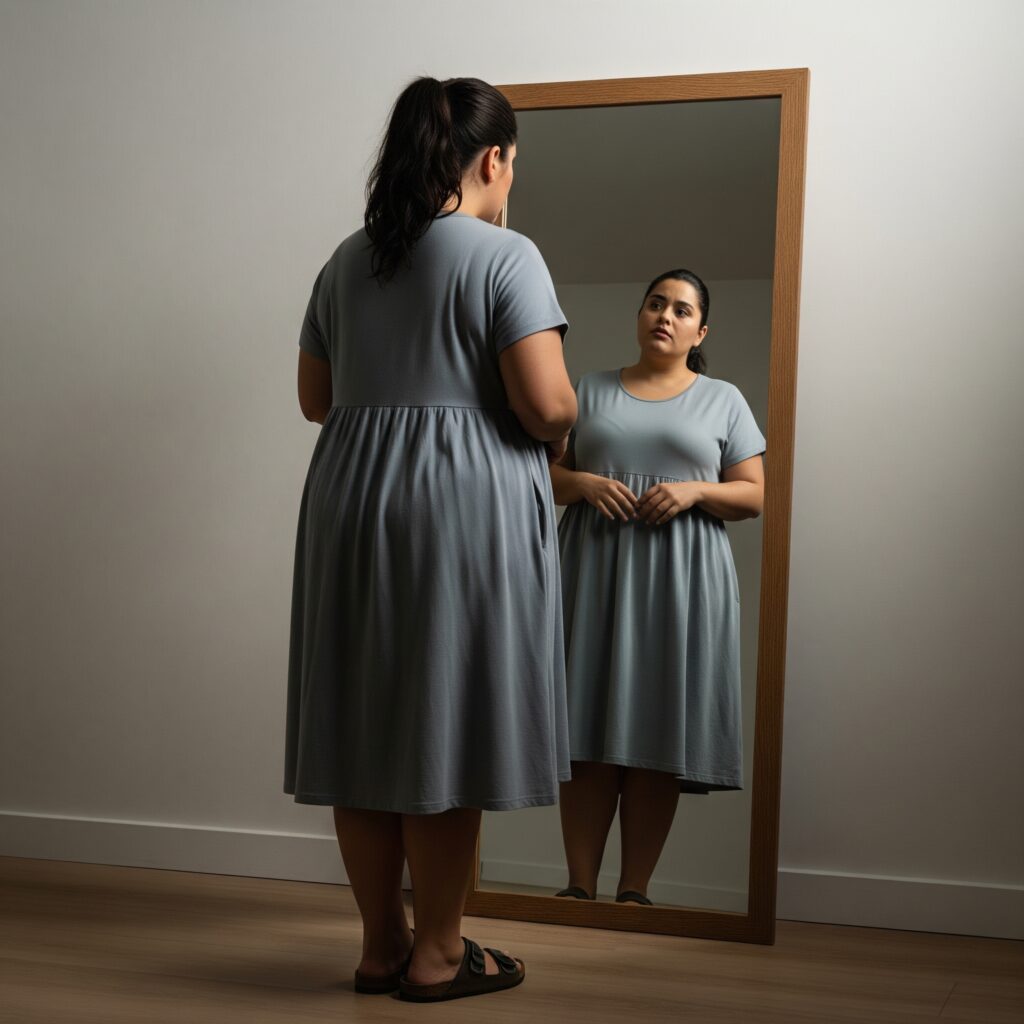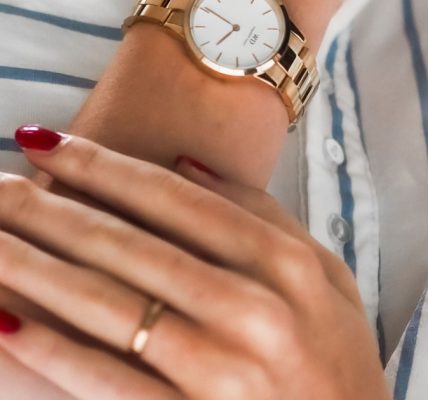A few years ago—long before the Ozempic effect began to significantly reshape contemporary beauty standards—we were finally starting to witness bodies like mine gracing magazine covers, extending beyond just King Magazine and hip-hop music videos. These platforms were important cultural cornerstones that propelled the careers of many curvy models and influencers of Black and Brown backgrounds. However, the visibility I’m referring to emerged from a more profound societal shift—one that the Ozempic effect now threatens to reverse.
What I’m emphasizing is the inclusion of plus size and curvy women in mainstream beauty campaigns and across various social media feeds—not merely as “brave,” but as normal. We weren’t just being tolerated; we were being styled, celebrated, and authentically seen in our diverse forms.
Then, almost overnight, the landscape began to shift dramatically. The thin ideal is back—but this time, it’s not tied to traditional crash diets or juice cleanses. It has become injectable, clinical, and, perhaps most concerningly, it has arrived with a suspicious silence. The Ozempic effect has emerged, along with a growing retreat from the body-positive visibility that many of us fought hard to establish.
Introducing: the Ozempic effect, along with its counterparts Wegovy and Mounjaro. Initially developed for treating Type 2 diabetes, these GLP-1 receptor agonists are now altering more than just blood sugar levels—they’re transforming bodies, societal ideals, and, quietly, the body positivity movement itself. I first noticed this shift among the Kardashians, which took me by surprise. Even without confirmation about their use of these medications for weight loss, my instincts kicked in—particularly with the sudden buzz surrounding Kim Kardashian and her desire to slim down.

While there’s nothing inherently wrong with women wanting to reshape their bodies, it’s essential to recognize that the very spotlight that once launched their careers was centered on their curvy figures. For many followers, the abrupt transformation of their favorite plus size and curvy entertainers and influencers into slimmer versions is perplexing, often accompanied by ambiguous captions like “feeling like myself again” or “focusing on my health,” which is commendable regardless of who you are. However, at times, the silence or vague explanations can lead followers to speculate that these individuals merely wish to conform to society’s evolving beauty standards.
Understanding the Ozempic Effect: Why It’s Capturing National Attention
Ozempic (semaglutide) and its counterparts such as Wegovy and Mounjaro were initially introduced to combat Type 2 diabetes. Yet, in recent times, they have become the preferred weight-loss solution for a wide range of individuals—from Hollywood A-listers to stay-at-home moms and trending TikTok influencers. According to Trilliant Health, more than 9 million GLP-1 prescriptions were issued in the U.S. in 2023, a number that is continuously on the rise.
Social media plays a pivotal role in this phenomenon. While few openly acknowledge using Ozempic, the visual aesthetics surrounding weight loss are telling. The language surrounding weight loss has also become more subtle—terms like “gut health,” “balanced hormones,” and “high performance” are now commonplace. Yet, we recognize these phrases for what they are: a perpetuation of the same thin ideal, now cloaked in wellness jargon and filtered images.

The Disquieting Retreat of Body Positivity
The body positivity movement—once seen as radical, messy, and community-driven—now appears strangely muted. What began as a passionate push for diverse body representation in fashion and beauty has been diluted into concepts like “body neutrality” and “confidence at any size.” This often feels like a polite way of suggesting, just don’t discuss it. The noticeable scarcity of plus size women in media advertisements and campaigns highlights a significant shift, which may be linked to numerous corporations retracting their DEI efforts. Yes, this has impacted body diversity as well.
However, the Ozempic effect has made one thing abundantly clear: brands are still uncomfortable with visible fatness. The subtle shrinkage of models in advertising campaigns, the reduction in size-inclusive clothing lines, and the diminishing presence of fat influencers all send a clear message.
This trend is not merely anecdotal. A 2023 KFF poll revealed that 1 in 4 U.S. adults would consider using a prescription drug for weight loss, even if they do not have a medical necessity. What does this reveal about the societal pressure to conform, even in a post-body-positive landscape? Or how brands might latch onto a “trend” purely for financial gain, only to revert to their original target audiences when society decides that inclusivity is no longer fashionable or relevant.
Examining the Double Standard in the Wellness Industry

Let’s clarify: no one is here to shame anyone for opting to use medication. Every body is personal, and health is a complex issue. However, the way we discuss these choices—especially when they involve celebrities or social media influencers—is where the danger lies.
Thin women who choose to take Ozempic are often lauded for “taking charge of their health.” In stark contrast, plus size women still face judgment for simply existing, irrespective of the choices they make. Plus size and curvy women frequently encounter negative remarks regarding their fitness routines, their fashion choices, and so forth. If they lose weight, they’re accused of succumbing to societal beauty standards. If they don’t, they’re viewed as irresponsible or lazy.
I have personally experienced weight loss, followed by weight gain—and at every size, there were always opinions to contend with.
Moreover, let’s not overlook that these medications are often costly and largely inaccessible for those who may genuinely need them. Thus, we find ourselves with a “wellness solution” that is predominantly available to celebrities, influencers, and those with privileged access to healthcare, leaving the majority of us to navigate the repercussions.
Recognizing the Risks: Erasure Masquerading as Empowerment
There is absolutely nothing wrong with exercising body autonomy. However, it is deeply concerning how swiftly the culture has flipped the narrative again—how quickly we’re erasing the strides made toward inclusive beauty in the name of “clean” or “disciplined” aesthetics.
We are witnessing a decline in the number of plus size models on runways. Size ranges that once included up to 4X are quietly being retracted. Furthermore, the once-assertive marketing that championed inclusivity has shifted to being more subdued, neutral, and frankly, slimmer.
My stance is not against weight loss; rather, I oppose the notion that our bodies were only accepted when they were trending. If your campaign can no longer accommodate a size 18, it indicates that it was never truly about inclusivity—it was merely about appearances. Ultimately, businesses in the fashion and beauty industries that prioritize exclusive marketing will face serious consequences.
Championing the Cause for Inclusive Beauty
We stand at a crucial juncture. The body positivity movement is being challenged—not solely by industry standards but also by a prevailing silence. Let this serve as a reminder: plus size women have created platforms, ignited conversations, and facilitated brand growth. We are not a trend or a mere footnote, and we will not be erased by another wave of aspirational thinness, embodied in this case by the “Ozempic effect”—regardless of how glossy, filtered, or pharmaceutical it may seem.
The Ozempic effect is undeniably real. But so is our strength and resilience. We are actively observing this shift and will continue to advocate for authentic representation.

Here you can find the original article; the photos and images used in our article also come from this source. We are not their authors; they have been used solely for informational purposes with proper attribution to their original source.






